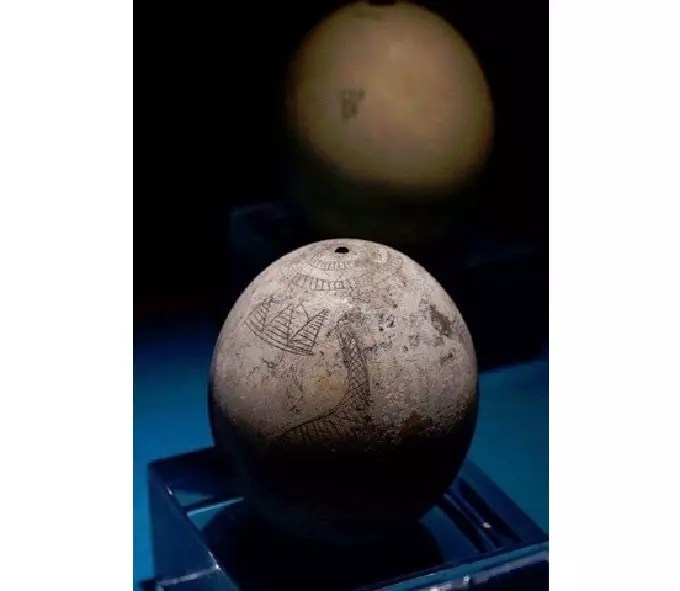The ancient Egyptians hunted ostriches even in pre-dynastic times. During this period, their eggs were widely used for a variety of purposes, from eating them to using them as containers after emptying them. One such egg was found in a tomb in Nubia belonging to the Naqada I culture and dating back more than 5,000 years. A special feature: it has a painting on it, which some associate with the pyramids of Giza, which is impossible given the official date of construction of these monuments.
Egyptologists estimate that the great pyramids on the Giza plateau are about 4,600 years old. However, because they are made of stone, traditional dating methods such as carbon-14 cannot be used to determine their age. Even worse, the lack of significant inscriptions inside these structures and the apparent architectural involution produced later suggest that the Egyptians of the time of Cheops, Hafren, and Meekerin may not have been their builders – or if they were, they had help from someone more advanced.
For the reasons stated above, much of what is known about the Giza complex is conjecture taken as historical truth. For example, Egyptology suggests that the so-called builders’ cemetery, found in 1990 near the three pyramids and their companions, belonged to those who erected the monuments. While this seems logical, the fact is that there are not as many tombs in that place as there must have been builders to build them – allegedly – with tools fresh out of the Neolithic era.

And let’s not even talk about the Great Sphinx, whose face does not match that of the pharaoh to which science attributes it.
The uncertainty that arose around the Giza Plateau led many to look for evidence beyond orthodoxy, and some findings were quite substantial – to at least consider the hypothesis of greater antiquity.
And it is to the latter that the striking ostrich egg found in a tomb near Aswan belongs. According to the dating, the human remains lying in that tomb were 5,000 years old. Consequently, it is reasonable to assume that the funerary toiletries found there were just as old.
The ostrich egg is decorated with a drawing of three pyramids and the Nile River on one side. But how is this possible, if the monuments of Giza – according to “official science” – did not yet exist five thousand years ago?
